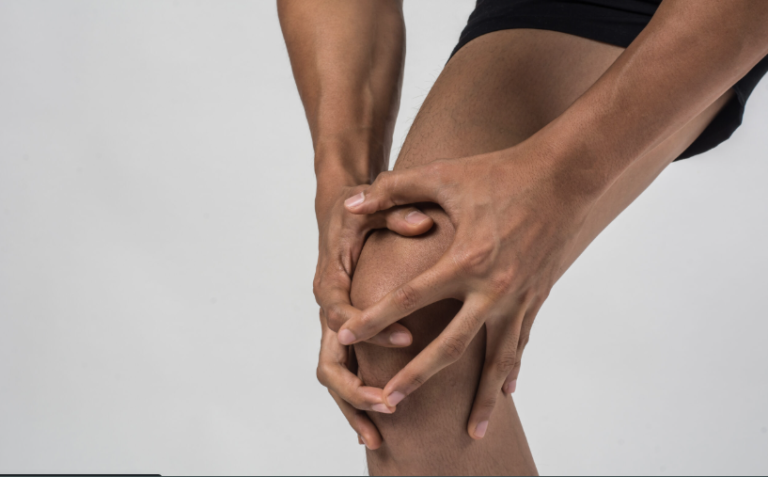Osteoarthritis (OA) is the most common degenerative joint condition, causing pain, stiffness, and swelling that can significantly impact mobility. This chronic disease primarily affects the knees, hips, spine, and hands, making everyday movements challenging for millions worldwide.
What is Osteoarthritis?
Osteoarthritis is often referred to as “wear and tear” arthritis because it results from the gradual breakdown of cartilage, the protective tissue that cushions joints. As cartilage deteriorates, bones may rub against each other, leading to pain and inflammation. While it can affect any joint, OA is most common in weight-bearing areas like the hips, knees, and spine.
Types of Osteoarthritis
- Primary Osteoarthritis: Develops naturally due to aging and long-term joint use.
- Secondary Osteoarthritis: Triggered by underlying conditions such as injuries, infections, or joint abnormalities.
- Tricompartmental Osteoarthritis: Affects all three compartments of the knee.
- Erosive Osteoarthritis (EOA): A more aggressive form, typically targeting the hands.
- Hip Osteoarthritis: Causes pain and stiffness in the hip joint, limiting movement.
- Spondylosis: Affects the spine and may cause discomfort in the neck or lower back.
- Shoulder Osteoarthritis: Impacts the ball-and-socket joint of the shoulder, reducing range of motion.
Causes and Risk Factors of Osteoarthritis
Osteoarthritis may develop due to a combination of genetic, lifestyle, and environmental factors. Some common causes include:
- Aging: Natural joint wear increases the likelihood of OA.
- Previous Injuries: Joint trauma or fractures can accelerate cartilage breakdown.
- Obesity: Excess weight puts additional stress on joints, particularly in the knees and hips.
- Poor Posture: Misalignment can contribute to joint strain over time.
- Family History: Genetics play a role in OA susceptibility.
- Lack of Physical Activity: Weak muscles may fail to support joints properly.
- Overuse of Joints: Repetitive movements in sports or work can accelerate wear and tear.
Symptoms of Osteoarthritis
Recognizing OA symptoms early can help manage the condition effectively. Common symptoms include:
- Joint pain and stiffness, especially after inactivity or overuse.
- Swelling around the affected joints.
- A grating sensation or popping sounds during movement.
- Bony growths (bone spurs) forming around joints.
- Decreased flexibility and mobility.
Diagnosing Osteoarthritis
A doctor diagnoses OA based on symptoms, medical history, and physical examinations. Common diagnostic tools include:
- X-rays: Identify cartilage loss, bone spurs, and joint damage.
- MRI Scans: Provide detailed images of joint tissues.
- Blood Tests: Rule out other conditions like rheumatoid arthritis.
- Joint Fluid Analysis: Detects inflammation and other underlying issues.
Treatment Options for Osteoarthritis
While there is no cure for OA, several treatments can help manage pain and improve joint function.
Non-Medical Treatments:
- Weight Management: Reducing excess weight eases pressure on joints.
- Exercise and Physical Therapy: Strengthening muscles around joints can improve flexibility.
- Cold and Heat Therapy: Helps relieve pain and inflammation.
- Assistive Devices: Braces, orthotic shoe inserts, and mobility aids reduce joint stress.
Medical Treatments:
- Over-the-Counter Medications: NSAIDs like ibuprofen help reduce pain and inflammation.
- Prescription Medications: Corticosteroids or hyaluronic acid injections provide relief in severe cases.
- Surgical Options: Joint replacement surgery may be necessary for advanced OA.
Complications of Osteoarthritis
If left untreated, OA can lead to severe complications, including:
- Joint deformities and bone spurs.
- Chronic pain that limits daily activities.
- Osteonecrosis (bone death) due to poor blood supply.
- Increased risk of falls and fractures.
Preventing Osteoarthritis
While OA cannot always be prevented, adopting a healthy lifestyle can reduce the risk:
- Maintain a Healthy Weight: Reduces stress on weight-bearing joints.
- Exercise Regularly: Strengthens muscles and improves joint flexibility.
- Eat a Balanced Diet: Foods rich in Omega-3 fatty acids, such as fish and seeds, support joint health.
- Ensure Adequate Vitamin D: Sunlight exposure and supplements help maintain strong bones.
- Use Proper Lifting Techniques: Prevents unnecessary joint strain.
- Monitor Blood Sugar Levels: High glucose levels can increase inflammation in joints.
For the latest health news and updates on osteoarthritis management, visit Nepal Monitor.
Osteoarthritis is a progressive condition that can impact daily life, but with the right management strategies, individuals can maintain mobility and reduce pain. Understanding its causes, symptoms, and treatment options is crucial for improving joint health and overall well-being. If you experience persistent joint pain, consult a healthcare professional to discuss personalized treatment plans.


